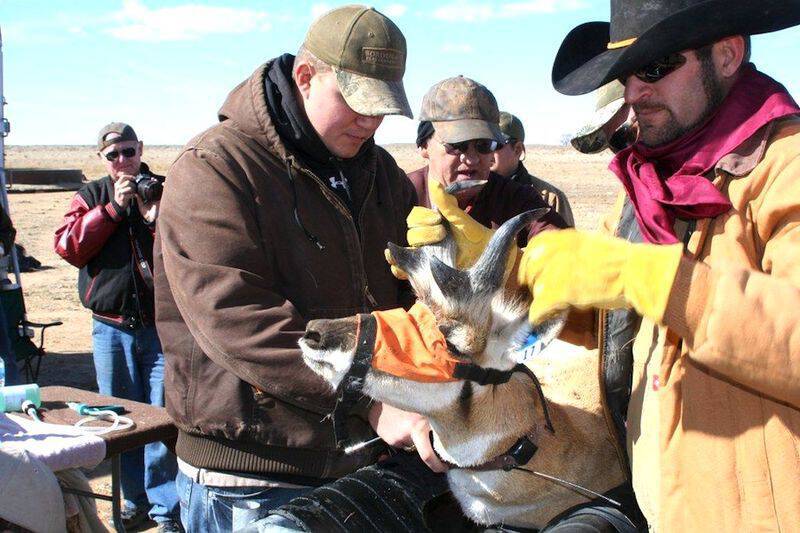Relocating the Pronghorn in Texas Shows Definite Results
This project is a collaborative effort of the Borderlands Research Institute at Sul Ross State University (BRI), Trans-Pecos Pronghorn Working Group, Texas Parks and Wildlife Department (TPWD), Texas Parks and Wildlife Foundation, USDA-Wildlife Services and private landowners.

Most recently, in 2014, the Trans-Pecos Pronghorn Restoration Project showed another large step in achieving its goal, by relocating another group of pronghorn – almost 100 of the animals in this latest move. Captured from healthy populations living around Pampa, they were moved to an area located just southeast of Marfa in order to re-supply and rebuild the pronghorn population, which had become severely depleted over the years due to everything from drought conditions to the non-harvesting of crops.
The project began when the pronghorn populations in parts of the Trans Pecos region of Texas reached numbers that were historically low. This is not an overstatement. Once, approximately seventeen thousand pronghorn were roaming the West Texas region, but had fallen to less than three thousand. Fortunately, private landowners, companies, universities, NGO’s and wildlife agencies have come together to restore the health of the populations and the land and habitats they reside on. The Trans-Pecos Pronghorn Restoration Project continues to show an incredible amount of success.
The statistics show positive results and benefits to landowners. Consider the move of 125 pronghorn that were captured in the Dalhart area and relocated to ranches near Marathon; with that move over eighty percent of the transplants remained healthy and reproduction remained at an all-time high for the past few years, producing a fawn crop of over 70 percent in the Marathon area alone.
Pronghorn Antelope are common throughout the high plains of North America. In Texas, they were once common over the western two-thirds of the state, ranging as far as Robertson County in the north and Kenedy County in south Texas. Now they are restricted to limited areas from the Panhandle to the Trans-Pecos. This iconic species is worth the effort to maintain, manage and assist its populations for the benefit of the landscape, hunters, landowners and other wildlife enthusiasts.
Months are spent working with landowners in order to prepare each release site, including everything from fence modifications to be Pronghorn friendly, to establishing trapping programs on private lands to reduce potential predation in the release area. In addition, Pronghorn relocations are closely monitored, with experts watching the new crop of fawns, and seeing firsthand the success of the developing herd populations. This not only makes for a healthier environment, but it will continue to restore the beauty and elegance of the Pronghorn in Texas.
As additional relocation and restoration efforts continue, it is easy to see that having Texas private landowners on board when it comes to increasing the general population of the Pronghorn is essential. Any wildlife restoration effort on private lands must involve the welcome participation of the landowner to yield positive results.